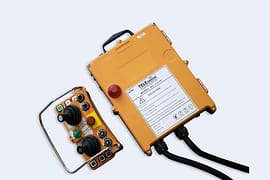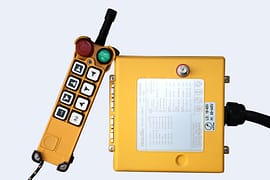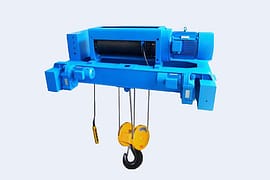- INDUSTRIES
-
EQUIPMENT
-
Overhead Cranes
-

Single Girder Overhead Crane
-

Double Girder Overhead Crane
-

Underslung Cranes
-

Workstation Overhead Cranes
-

Low Headroom Overhead Cranes
-

Grab Bucket Overhead Crane
-

Electromagnetic Overhead Cranes with Lifting Magnet
-

Electromagnetic Overhead Cranes with Magnet Beam
-

Manual Overhead Cranes
-

Double Trolley Overhead Cranes
-

LDP Single Girder Overhead Cranes
-
- Eot Cranes
- Gantry Cranes
- Jib Cranes
- FEM Standard Crane & Hoist
- Hoist & Winch Trolley
- Light Cranes
- Explosion Proof Cranes and Hoists
-
Special Cranes
-

35-65t Clamp Overhead Crane
-

Boat Hoists
-

Boat Jib Crane
-

Yacht Davit Crane
-

Rail Mounted Container Gantry Crane
-

Cleanroom Overhead Cranes
-

YZ Ladle Handling Cranes
-

LDY Metallurgical Single Girder Crane
-

Charging Cranes for Steel Production
-

Insulated Overhead Cranes
-

Gantry Crane for Subway and Metro Construction
-

Forging Crane
-

Quenching Overhead Crane
-

Baking Multifunctional Crane
-
- Port Cranes
- Electric Transfer Carts
-
Overhead Cranes
-
CRANE PARTS
- Crane Wheel Range
- Crane Spreader
- Crane Drives
-
Crane Electrical Equipment
-

Overload Limiter
-

Crane Cabin
-

Crane Power Supply System
-

Explosion Proof Crane Radio Remote Controls
-

Joystick Type Crane Radio Remote Controls
-

Pushbutton Type Crane Wireless Remote Controls
-

Single-pole Insulated Conductor Rails
-

Enclosed Conductor Rails
-

Seamless Conductor Rails
-

Copperhead Conductor Rails
-

Overhead Crane Cables
-
- Other Cranes Parts
\
- ABOUT US
- CONTACT US
Crane safety has been addressed by the Occupational Safety and Health Administration (OSHA) as well as the manufacturers. Protection from harm should always take precedence any time this machinery is in operation. OSHA calls for all employers to participate in precautionary measures to stop crane-related deaths.
Crane accidents are one issue that construction industries are faced with on a daily basis. The incident rate of crane-related accidents has been rising over the past few years. In 2006, there were 72 fatalities recorded and that figure accelerated the following year to approximately 90 deaths. These accidents were due to mechanical failure, negligence on the part of the operator, and inadequate safety inspections.
OSHA’S Crane Safety Practices
To avoid preventable deaths and severe injuries, OSHA has designed the following guidelines:
- Operator – Only qualified and certified personnel should operate a crane truck.
- Inspection – A thorough inspection should be performed by qualified mechanics with importance placed on the control system.
- Ground Position – Hoisting equipment should be positioned on compact and even ground.
- Work-site Safety – The work zone should be marked using flags and outriggers should be fully extended per the recommendation of the manufacturer.
- Overhead Clearance – Operators should be aware of overhead power lines in the area. A ten-foot clearance should be observed from the swinging radius to the electrical lines.
- Equipment Safety – Hoist lines should not be wrapped around the cargo and all rigging should be inspected before operation.
- Equipment Capability – Operators should be updated with current crane configurations and absolutely know the maximum lifting capacity.
- No Overloading – Under no circumstances should overloading be permitted while hoisting.
- Work-site Observation – Material should not be moved if workers are in the vicinity.
- Follow the Guidelines – Universal crane signals and safety instructions must be followed while using the lifting equipment.
General Crane Safety Practices
Truck-mounted hydraulic cranes are the cause of the most incidents and fatalities among the various types of lifting equipment. Operators must be aware of general safety standards necessary to avoid deadly accidents.
- Identify All Hazards – Operators should identify the number of hazards present in the area: electrical, ground condition, and fall hazards.
- Operator Training – Training regarding cargo preparation, hydraulic truck operation, and load securing should be taken by operators before using hoisting equipment.
- PPE Must be Worn – Personal protective equipment should always be worn, i.e. hard hats, vests with retro-reflective stripes, and safety boots.
- No Overloading – Avoid exceeding the rated lifting capacity. This causes a high risk for accidental tip-over.
- Secure the Cargo – Always secure the cargo before lifting. Ensure that hooks and chains are properly fastened around the materials to be hoisted.
- No Sudden Movements – Avoid jarring of the equipment. Rotating, lifting and lowering of the hydraulic arm should be done gradually.
- Avoid Lifting over Things or People – Do not lift cargo over the cab of the crane or over workers.
- Stabilize Crane – Outriggers and stabilizers should be used extensively.
- Use Signals – Use a signal person if operators have limited views.
- No Extra Riders – Operators should not allow anyone to ride on a load while hoisting.
Accidents impact the business and the lives of the workers involved. They may affect the production level of the company or the ability of the company to generate revenue and cause financial hardship for the company because of such incidents. To address these issues, both the government and private business sectors have begun to encourage operators of hoisting equipment to join the safety campaign related to the usage of the crane truck. These safety guidelines should be a lifeline to operators to help them prevent irresponsible accidents that cause severe injuries or death from ever happening – it is a basic Accident Prevention 101!


Zora Zhao
Expert in Overhead Crane/Gantry Crane/Jib Crane/Crane Parts Solutions
With 10+ years of experience in the Crane Overseas Export Industry, helped 10,000+ customers with their pre-sales questions and concerns, if you have any related needs, please feel free to contact me!
WhatsApp: +86 158 3611 5029
Email: zorazhao@dgcrane.com
Related Blogs
Subscribe to our newsletter
The latest DGCRANE price list, news, articles, and resources.
- Overhead Cranes
- Low Headroom Overhead Cranes
- Double Girder Overhead Crane
- Grab Bucket Overhead Crane
- Top Running Overhead Crane: Wide Application and Easy Maintenance
- Coker Cranes for Harsh Environments: High Temperature and Corrosion Resistant Design
- Single Girder Overhead Cranes
- Eot Cranes
- Eot Crane
- Single Girder Eot Cranes
- Double Girder Eot Cranes
- Underslung Cranes
- Gantry Cranes
- Shipyard Gantry Cranes: Specialized Lifting Solutions for Shipyard Operations
- Truss Gantry Cranes: Cost-Effective, Wind-Resistant, and Perfect for Large Spans
- Gantry Crane
- Different Types of Small Portable Aluminium Gantry Cranes: Cost Effective
- Single Girder Gantry Cranes
- Double Girder Gantry Cranes
- Semi Gantry Cranes
- Casting Yard Gantry Cranes
- Container Gantry Cranes (RMG)
- Portable Gantry Cranes
- FEM Standard Crane & Hoist
- FEM Standard Overhead Cranes
- FEM Standard Gantry Cranes
- FEM Standard Jib Cranes
- FEM Standard Wire Rope Electric Hoists
- FEM Standard Electric Chain Hoists
- Hoist & Winch Trolley
- Low Headroom Wire Rope Electric Hoist: Compact Design for Efficient Lifting in Tight Spaces
- Electric Hoist for Molten Metal: High-Temperature, Safe Lifting for Metallurgical Environments
- Pneumatic (Air) Chain Hoists: Ideal for Explosion-Proof Environments
- 6 Double Girder Trolley Electric Hoists for Overhead Cranes: Custom Solutions for Every Lifting Need
- Manual Chain Hoists: Alloy Steel Construction for Smooth and Safe Lifting
- Electric Wire Rope Hoists
- Chain Hoists
- Crane Trolley
- Electric Winch
- Port Cranes
- Rubber Tyred Container Gantry Crane
- Ship To Shore Crane
- Container Straddle Carrier
- Harbour Portal Crane
- Shipyard Portal Cranes
- Reliable Versatile Electric Transfer Carts
- Powerful Heavy Duty Coil Transfer Carts
- Powerful Pallet Transfer Carts
- Rail Transfer Carts
- Reliable Heavy Duty Ladle Transfer Cars
- RGV Transfer Carts
- Superior Die Transfer Carts
- Trackless Transfer Carts
CRANE PARTS
- Special Cranes
- Rail Mounted Container Gantry Crane
- Cleanroom Overhead Cranes: Reliable Solutions for Healthcare, Electronics, and GMP Workshops
- Charging Cranes for Steel Production: Safe and Reliable Solutions for Efficient Material Handling
- Insulated Overhead Cranes for Safe Non-Ferrous Metal Smelting
- Gantry Crane for Subway and Metro Construction: Efficient Tunnel Debris Removal Solutions
- Quenching Overhead Crane for Heat Treatment Plant: High-Temperature Insulated and Efficient Lifting Solution
- Heavy Duty Forging Cranes: Durable, High-Capacity Solutions for Forging
- Baking Multifunctional Crane: Furnace Tending Assembly for Efficient Carbon Roasting
- 35-65t Clamp Overhead Crane
- Boat Hoists
- Yacht Davit Crane
- Boat Jib Crane
INDUSTRIES
COMPANY
- sales@dgcrane.com
- +86-373-3876188
- +86 158 3611 5029
- Floor 30,Gongyuan INT'I Building, Jinsui Road, Xinxiang City, Henan Province, China



















































































